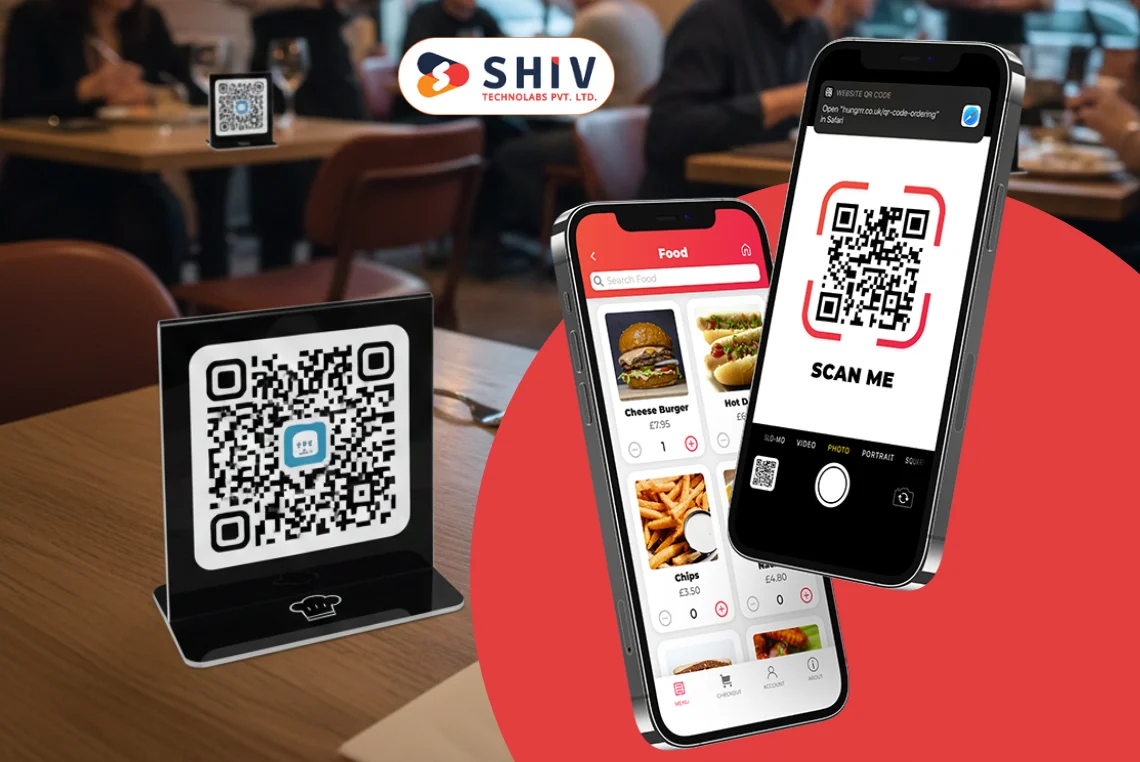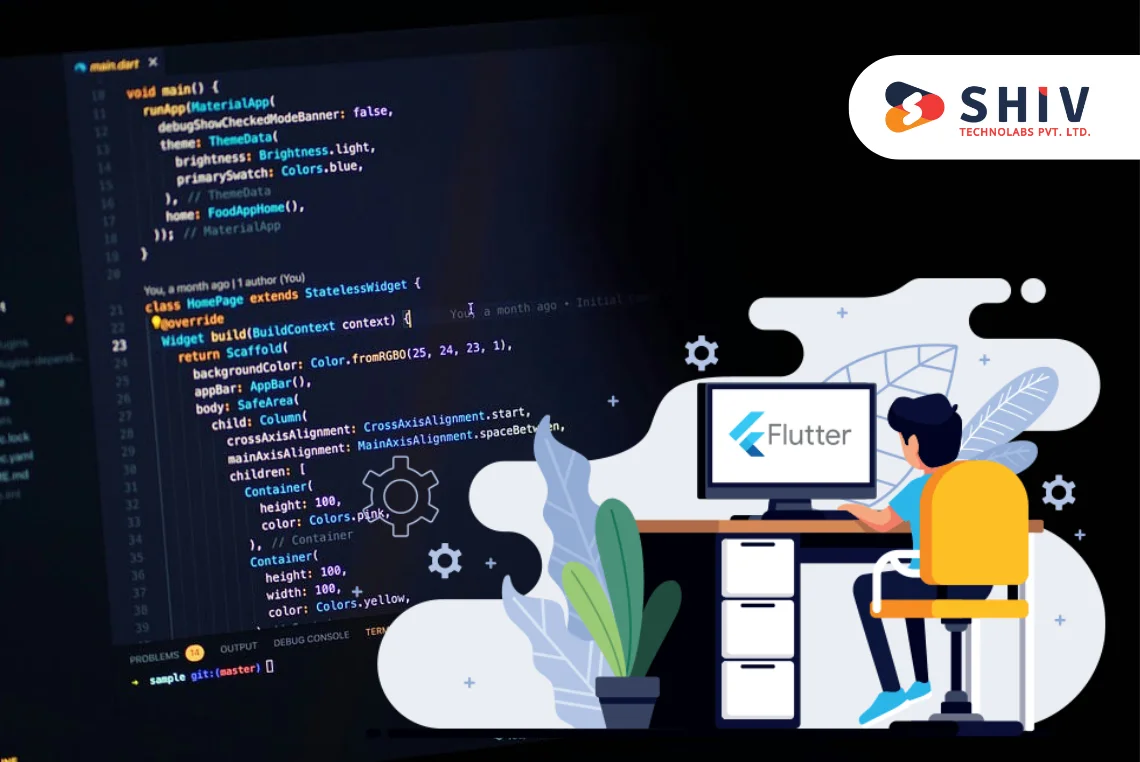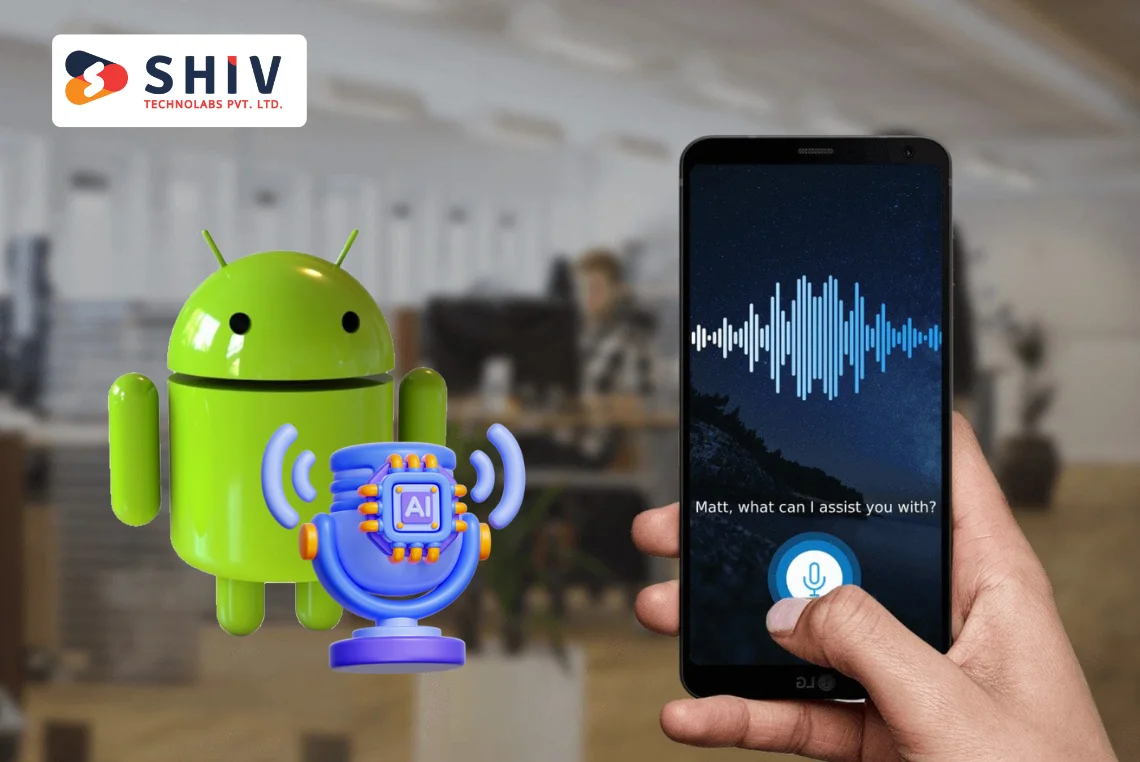Table of Contents
With the growing dependence on mobile applications, businesses must decide between native and hybrid app development. Each approach has advantages and trade-offs that affect performance, development cost, and user experience. The right choice depends on business goals, required functionalities, and budget constraints.
A well-structured mobile application can help businesses engage customers, streamline operations, and improve brand presence. However, the success of an app largely depends on the development approach. While native apps offer better performance and user experience, hybrid apps reduce development costs and time-to-market. This article breaks down the difference between native and hybrid app development with examples and provides insights into choosing the best option.
What is a Native App?
A native app is built for a specific platform—either iOS or Android. Developers use platform-specific programming languages such as Swift or Kotlin and follow strict guidelines set by Apple or Google. Since the code is written specifically for one platform, native apps perform efficiently and integrate seamlessly with device hardware.
Advantages of Native Apps Over Hybrid Apps
1. Superior Performance
- Native apps interact directly with the operating system, making them faster and more responsive.
- Since they are optimized for specific platforms, loading times and processing speed remain consistent.
2. Enhanced User Experience
- Native apps follow platform-specific UI/UX guidelines, ensuring a natural and intuitive interface.
- Transitions, animations, and gestures align with user expectations, improving overall engagement.
3. Access to Advanced Device Features
- Native development allows apps to interact directly with device hardware, including the camera, GPS, Bluetooth, and fingerprint sensors.
- Unlike hybrid apps, native applications don’t rely on third-party plugins, reducing the risk of compatibility issues.
4. Higher Security Standards
- Apps handling sensitive user data, such as banking, healthcare, and enterprise applications, benefit from built-in security protocols.
- Features like biometric authentication, data encryption, and secure local storage are more reliable in native apps.
Despite these advantages, native app development requires more resources, making it costlier than hybrid development.
What is a Hybrid App?
A hybrid app is a combination of web and native technologies. These applications are built using web development languages like JavaScript, HTML, and CSS and are enclosed in a native shell. This allows hybrid apps to function on both iOS and Android using a single codebase.
# Benefits of Hybrid Apps for Cross-Platform Development
1. Faster Development Process
- A single codebase reduces development time since the app works across multiple platforms without separate coding.
- Businesses looking to launch their apps quickly often prefer hybrid solutions.
2. Lower Development and Maintenance Costs
- Since hybrid apps don’t require separate teams for Android and iOS app development, overall costs remain lower.
- Maintenance becomes easier, as updates are deployed simultaneously across platforms.
3. Easier Scalability
- Hybrid apps allow businesses to reach a wider audience without investing in multiple development projects.
- If expansion is planned, scaling a hybrid app is more manageable than maintaining separate native apps.
4. Better for Content-Based Applications
- Hybrid development works well for applications that primarily display text, images, and videos rather than process-heavy operations.
- Examples include news apps, blogs, and social media platforms that don’t require deep integration with hardware.
While hybrid apps offer convenience and affordability, they cannot match native apps in terms of speed, user experience, and security.
Also Read: Mobile App Development Tools For 2025: The Ultimate Guide
Key Differences Between Native App and Hybrid App

Businesses often struggle to decide between native and hybrid apps for their mobile applications. Native apps provide high performance and better user experience, while hybrid apps offer cross-platform compatibility with a single codebase. This comparison highlights their core differences to help in making an informed choice.
# Performance of Hybrid Apps vs. Native Apps
Performance remains one of the most critical factors in app development.
- Native apps deliver superior speed and responsiveness because they are optimized for their respective platforms.
- Hybrid apps may experience lag or slower loading times, especially when handling complex features like video rendering, GPS tracking, or 3D animations.
- Gaming, live streaming, and high-traffic applications benefit significantly from native development.
Also Read: Build a Netflix-Style App for Your Business: A Guide to Custom Video Streaming App Development
# User Experience and Interface Consistency
- Native apps follow platform-specific design guidelines, making them feel more natural to users.
- Hybrid apps attempt to provide a uniform design across platforms, which sometimes leads to a compromised user experience.
- If an application requires an intuitive, well-structured user interface, native development is often the better choice.
# Access to Device Features
- Native apps interact directly with hardware, offering better support for biometric authentication, push notifications, offline mode, and background processes.
- Hybrid apps rely on third-party plugins, which may lead to inconsistencies or compatibility issues.
- Businesses requiring deep device integration should opt for native development.
Let’s explain the native app and hybrid app key differences across multiple factors.
| Factor | Native App | Hybrid App |
|---|---|---|
| Definition | Built specifically for a platform (iOS or Android) using platform-specific programming languages. | Built using web technologies (HTML, CSS, JavaScript) and runs within a native container. |
| Codebase | Requires separate codebases for iOS and Android. | A single codebase can be used for multiple platforms. |
| Performance | Faster and more responsive due to direct interaction with the operating system. | May experience lags or slower performance, especially in complex applications. |
| User Experience | Provides a superior, platform-specific experience with smooth animations and intuitive interfaces. | May not always match the look and feel of native applications, leading to inconsistencies. |
| Security | Offers strong security as it follows platform-specific encryption and authentication standards. | Relies on third-party plugins for security, making it slightly less secure. |
| Access to Device Features | Full access to device capabilities such as camera, GPS, Bluetooth, push notifications, and biometric authentication. | Limited access to device hardware, often requiring additional plugins. |
| Maintenance & Updates | Requires separate updates for each platform, making maintenance more complex. | Updates can be applied simultaneously across multiple platforms. |
| Scalability | Easily scalable with platform-specific enhancements and future updates. | Scalable but may face compatibility issues when new platform features are introduced. |
| Offline Functionality | Works well even without an internet connection as the app is built for a specific platform. | Often depends on an internet connection to function efficiently. |
| Suitability for Complex Applications | Best for applications requiring real-time processing, such as gaming, AI-based apps, and high-performance applications. | More suitable for content-driven applications like blogs, news apps, or simple e-commerce platforms. |
| Best For | Businesses require high performance, security, and deep device integration. | Companies aiming for cost-effective, fast development across multiple platforms. |
# When to Choose Native App Development?
A native app is ideal for businesses that require high performance, security, and deep device integration. It is best suited for:
- Gaming applications that need smooth animations and high frame rates.
- Financial and banking apps require strong security protocols.
- E-commerce apps with personalized user interactions and real-time transactions.
- Healthcare applications that handle sensitive user data and require encryption.
# When to Choose Hybrid App Development?
Hybrid development is a good option for businesses looking to launch apps quickly with limited resources. It is suitable for:
- Startups with tight budgets that need apps for both iOS and Android.
- Content-based applications like news apps, blogs, or video-sharing platforms.
- Enterprise apps that do not require advanced hardware integration.
- Retail and service businesses that need basic cross-platform functionality without high processing requirements.
Also Read: Why Choose React Native for Hybrid App Development?
Cost Comparison of Native App Development and Hybrid App Development

The cost of mobile app development depends on multiple factors, including development time, resources, platform requirements, maintenance, and complexity. Native app development is generally more expensive than hybrid app development because it requires separate coding for different platforms (iOS and Android), whereas hybrid apps share a single codebase across multiple platforms. Let’s discuss the comparison of the cost differences between native and hybrid app development.
# Key Cost Factors in Native vs. Hybrid App Development
| Cost Factor | Native App Development | Hybrid App Development |
|---|---|---|
| Development Time | Longer (Separate coding for iOS and Android) | Shorter (Single codebase for both platforms) |
| Development Cost | Higher (Two separate teams or developers needed) | Lower (One team can build and manage both platforms) |
| Developer Expertise | Requires platform-specific developers (Swift/Kotlin experts) | Can be built by web developers (HTML, CSS, JavaScript) |
| UI/UX Design | Customized for iOS and Android, improving user experience | A single design across platforms, which may cause inconsistencies |
| Integration with Device Features | Direct access to hardware, requires more coding time | Requires third-party plugins, which may increase development time |
| Security Costs | Higher security standards built into the app | Extra security measures may be needed due to reliance on plugins |
| Maintenance & Updates | Requires separate updates for each platform | Easier to update with a single codebase |
| Long-Term Costs | Higher due to platform-specific updates & maintenance | Lower maintenance costs but may require adjustments over time |
# Cost Breakdown of Technology Stack for Native vs. Hybrid App Development
| Technology | Native App Development Costs | Hybrid App Development Costs |
|---|---|---|
| Programming Language Cost | Free (Swift, Kotlin, Java are open-source) | Free (JavaScript, Dart, HTML, and CSS are open-source) |
| Development Framework Cost | Free (Android SDK, iOS SDK) | Free (React Native, Flutter, Ionic, Xamarin) |
| IDEs & Tools Cost | Xcode (Free), Android Studio (Free) | Visual Studio Code (Free), WebStorm ($60/user/month) |
| Testing Tools Cost | XCTest (Free), Firebase Test Lab ($1/device/hour) | Appium (Free), Selenium (Free) |
| CI/CD Cost | Bitrise ($49–$299/month), Jenkins (Free) | GitHub Actions (Free for basic use), Codemagic ($49+/month) |
| Security Tools Cost | ProGuard (Free), App Transport Security (Built-in) | OAuth (Free), Firebase Authentication (Free for limited use) |
| Backend Services Cost | Firebase (Free for basic use, $25+/month for premium), AWS (Pay-as-you-go) | Firebase (Same pricing), AWS (Same pricing) |
| API & Plugin Costs | Apple Pay (Transaction-based), Google Pay (Transaction-based), GraphQL API ($0.50/million queries) | Same as native but relies on third-party plugins ($5–$50/month for some premium APIs) |
# Cost Breakdown of Native vs. Hybrid App Development
| Cost Component | Native App Development | Hybrid App Development |
|---|---|---|
| Design & Prototyping | $5,000 – $20,000 | $5,000 – $15,000 |
| Development (iOS + Android) | $50,000 – $250,000 | $20,000 – $100,000 |
| Testing & QA | $10,000 – $30,000 | $5,000 – $20,000 |
| Maintenance (Annual) | $10,000 – $50,000 | $5,000 – $15,000 |
| Total Estimated Cost | $75,000 – $350,000 | $35,000 – $150,000 |
Note: These are estimated costs and may vary based on project scope, complexity, and location of the development team.
Native development costs more upfront but delivers superior performance, security, and user experience. Hybrid development reduces initial costs and speeds up development but may require adjustments over time. Businesses should evaluate their long-term goals, target audience, and budget before choosing between native vs hybrid app development.
Real-world Examples of Native and Hybrid Apps
Examining real-world applications can help businesses understand the impact of native and hybrid app development. Several well-known companies have chosen different approaches based on their requirements.
# Real-world Examples of Native Apps
1. WhatsApp
- WhatsApp is a native app, built separately for Android and iOS.
- The app handles real-time communication, media sharing, and end-to-end encryption efficiently.
- The native approach ensures stability, speed, and high security for millions of users.
Also Read: How to Build an App Like WhatsApp? Android & iOS Cost
2. Spotify
- Spotify uses native development to provide high-quality audio streaming and personalized recommendations.
- The native app ensures fast loading times and seamless offline functionality.
- The platform continuously improves its AI-driven recommendation system, which works best with a native architecture.
# Real-world Examples of Hybrid Apps
1. Instagram
- Initially, Instagram adopted a hybrid approach to reduce development time.
- The hybrid model allowed faster feature releases across iOS and Android.
- Over time, the company moved certain features to native development to improve performance.
2. Uber
- Uber’s driver-facing app is built natively for speed and GPS tracking.
- The rider-side app uses a hybrid approach, allowing it to run efficiently across different devices.
- The hybrid model helps Uber manage cross-platform compatibility while keeping costs low.
Also Read: Uber Who? The New Taxi App Shaking Up Abu Dhabi’s Ride-Hailing Industry!
Future Trends in Native and Hybrid App Development
The mobile development landscape is evolving rapidly. Businesses must stay updated with new technologies that impact the performance, cost, and efficiency of native and hybrid applications.
- Artificial Intelligence and Machine Learning– AI-driven apps improve user engagement with personalized recommendations, voice assistants, and predictive analytics. Native development offers better AI integration due to platform-specific optimizations.
- 5G Technology– 5G enhances app performance with faster data speeds, lower latency, and improved connectivity. Apps built using native development can take full advantage of 5G networks.
- Progressive Web Apps (PWAs) as an Alternative– PWAs combine the best features of web and mobile apps. Businesses looking for cost-effective solutions are increasingly considering PWAs over hybrid apps.
- Increased Focus on App Security– Cybersecurity threats are rising, making data protection a priority. Native applications offer better security due to built-in encryption and platform-specific authentication methods.
- Cross-Platform Development Will Continue to Improve– Flutter and React Native are reducing the gap between native and hybrid app performance. Hybrid applications will continue adopting features that make them more efficient.
Also Read: Flutter vs. React Native: The Top Choice for App Development
Get Expert Native App Development Services From Shiv Technolabs At Affordable Rates
In today’s competitive market, businesses need high-performance, scalable, and secure mobile applications to meet evolving customer expectations. As a top native app development services provider, Shiv Technolabs offers custom iOS and Android app development solutions tailored to your business needs.
Our Expertise:
- Platform-Specific Development: Expert in Swift (iOS) and Kotlin (Android).
- Custom Solutions: Tailored for industries like eCommerce, healthcare, fintech, and more.
- High-Performance Apps: Fast, intuitive apps with advanced features like GPS, push notifications, and AI integration.
- End-to-End Services: From UI/UX design to deployment and maintenance.
Partner with Shiv Technolabs to build next-generation native mobile apps that deliver unmatched speed, security, and user engagement. Our expert team ensures timely delivery, transparent communication, and cost-effective solutions to help your business succeed.
Conclusion
Choosing between native and hybrid app development ultimately depends on your business goals, budget, and required functionality. Native apps offer superior performance, security, and user experience, making them ideal for performance-driven and complex applications. On the other hand, hybrid apps provide cost-effective solutions and faster development, making them a great choice for content-based apps and businesses looking to reach a wider audience quickly.
At the end of the day, whether you opt for native or hybrid development, it’s important to align the choice with your long-term business objectives. If you’re unsure which path to take, expert consultation can help ensure your mobile app stands out in today’s competitive market.
Need help deciding? As a top hybrid and native mobile app development company, Shiv Technolabs provides intuitive and interactive app solutions. Discuss your app requirements with our team to turn your idea into a live app.























